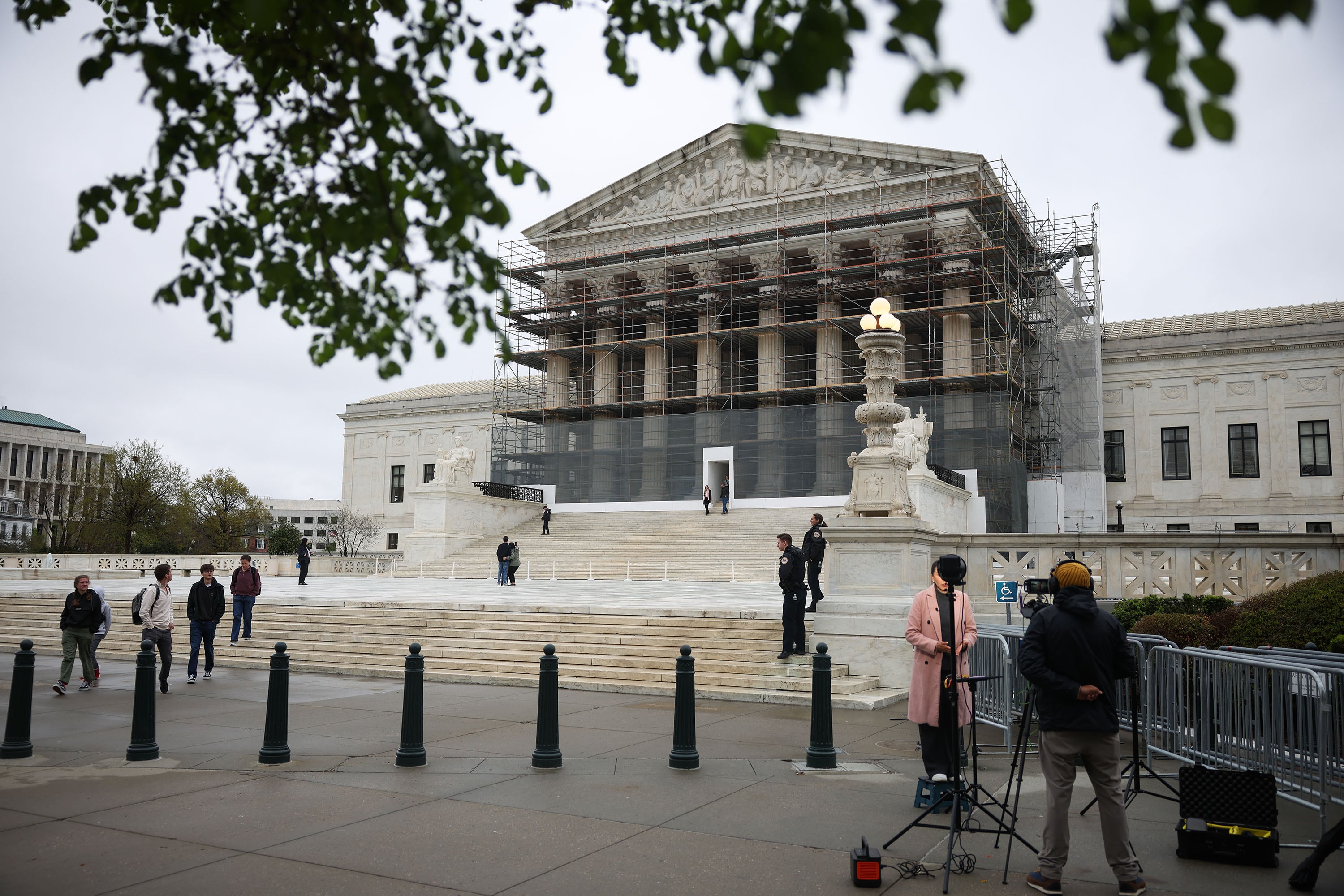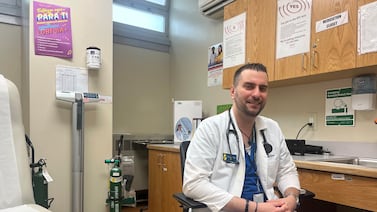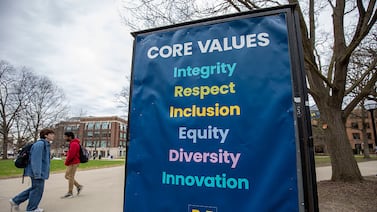Sign up for Chalkbeat’s free weekly newsletter to keep up with how education is changing across the U.S.
The case of St. Isidore of Seville Catholic Virtual School could represent a seismic shift in American education.
The Archdiocese of Oklahoma City and the Diocese of Tulsa are seeking to open the nation’s first religious charter school, challenging traditional understandings of church and state as well as state laws that require charter schools to be secular.
But the Oklahoma Supreme Court found that the school was unconstitutional and that state authorities should not have granted St. Isidore a charter. Now the U.S. Supreme Court will decide whether the school can open.
The case is not just about whether public funds can support religious schools. Legally, the question at the heart of the St. Isidore case is: Are charter schools really public schools?
A finding that charter schools are private entities would require revisiting decades-old legal assumptions while giving rhetorical ammunition to the sector’s strongest critics. Charter supporters fear that public funds, their treasured autonomy, and perhaps even their existence are at risk.
“We could see a situation where almost every charter law has to be opened up and reconsidered and relegislated,” said Eric Paisner, chief operating officer for the National Alliance for Public Charter Schools, which filed a friend-of-the-court brief in opposition to St. Isidore.
These publicly funded but independently run schools once enjoyed broad bipartisan support as an alternative to vouchers and other forms of private school choice. Charters have flourished in states whose constitutions clearly prohibit public funding for private schools. But while they remain popular with parents, the charter sector is increasingly embattled politically, especially in Democrat-led states.
That should not be a concern of the courts, said Nicole Stelle Garnett, a law professor at Notre Dame University who laid out the legal blueprint for religious charter schools in an influential paper for the Manhattan Institute, a conservative think tank.
That state laws refer to charter schools as public schools has little bearing on their legal status, she said, and there’s a strong case to be made that they are private entities that contract with the government to provide a public good. If that’s true, denying taxpayer dollars to religious charter schools is simply discrimination, she said. And discrimination is bad and illegal.
“They are worried about the political blowback,” she said of charter leaders who want the high court to rule against St. Isidore. “Those are not legal arguments.”
Charter schools have a hybrid legal status
Minnesota passed the nation’s first charter school in 1991, just a year after the nation’s first voucher program launched in Milwaukee. Today there are roughly 8,000 charter schools in 46 states and the District of Columbia serving some 3.7 million students. State laws typically describe charter schools as public schools and require that they be nonsectarian — secular rather than religious.
These schools are funded by the state, they can’t charge tuition, they’re accountable to the government for student performance, and they generally can’t choose their students. They might be authorized by school districts, universities, or the state itself. Charters have withstood legal challenges in states that prohibit taxpayer dollars from being used at private schools, with courts finding that charters are public schools.
“Charter schools are public schools” is the automatic response supporters give to both critics and the merely confused who see them as something else, something halfway to a private school.
But charter schools also are exempt from many laws and regulations that govern district-run schools. They’re run by independent, unelected boards and often organized as non-profit entities. In some states, such as Michigan, even for-profit companies can run charter schools.
Charter schools themselves have argued — often successfully — that they are non-state actors when they need to defend personnel decisions or student discipline policies in court.
Most recently, a North Carolina charter school argued that its dress code, which required girls to wear skirts, could not violate the civil rights of its female students because it was not a state actor. The 4th Circuit Court of Appeals disagreed. North Carolina had delegated its educational function to the charter school, and the dress code had to go.
That school and other classical academies, along with the North Carolina Coalition for Charter Schools, has filed its own friend-of-the-court brief arguing that if charter schools are found to be government entities, that would expose them to lawsuits and regulations, “sanding off the edges of cultural and pedagogical difference until the schools are virtually indistinguishable from their public-school counterparts.”
“Charter schools have wanted to have it both ways, where they were public for matters that they like, like funding, and private for things that they may not like, for instance, teacher rights,” said Preston Green, a professor of education at the University of Connecticut who has written extensively about charter schools.
Now the debate about whether charter schools should be viewed as state actors — entities that act with the same authority as the government and are bound by the same constitutional limitations — is on a collision course with the Supreme Court’s evolving view of religious freedom.
For many years, the First Amendment’s prohibition on government establishment of religion was interpreted to mean public money could not fund religious institutions. More recently, though, the Supreme Court’s conservative majority has found that denying public funding to religious organizations is a form of discrimination.
In 2022, the Supreme Court ruled in Carson v. Makin that states that have private school choice programs cannot exclude religious schools from participation.
Oklahoma officials leaned heavily on that decision when, in 2023, they gave approval to St. Isidore of Seville to start a virtual Catholic charter school. Now the state’s charter authorizing board wants the Supreme Court to decide that St. Isidore charter school should be viewed as a privately owned and run school.
Many charter leaders fear fallout of St. Isidore ruling
In its friend-of-the-court brief, the National Alliance for Public Charter Schools argues that the Supreme Court could turn down St. Isidore without even touching the question of whether charter schools are state actors. Directly authorizing and funding a religious school would represent a state establishment of religion, their attorneys write, and is not comparable to giving parents money that they can choose to spend at religious or secular schools of their choice.
But if the court does take up the state actor question, the justices should find that charter schools are state actors, at least in this circumstance, they argue. Charter schools only exist because the government creates them.
“No school existed on June 5, 2023, then the State Board issued the charter at its meeting, and now there is a school,” the charter alliance brief says. “The resulting school, St. Isidore, is neither all church nor all state, but a blend of church and state.”
Democratic attorneys general and politicians from both parties who wrote some of the nation’s first charter laws have filed their own briefs, arguing that charter schools were conceived to solve problems within public education using public tools. Even the fact that charters are exempt from some laws and regulations is evidence that they are a function of state government.
Robert Reed, vice president of legal affairs for the National Alliance for Public Charter Schools, fears that some Democrat-led states, if forced to approve religious charter schools, would simply end their charter programs.
“Those states probably couldn’t stomach those types of schools,” he said.

Where state constitutions bar funding private schools, a finding that charter schools are fundamentally private in nature might reopen the question of whether they can receive taxpayer dollars, Reed said. It could also prevent charter schools from using bond funds for facilities and lock charter teachers out of state pension systems.
Green doubts that policymakers and politicians will abandon charter schools, even in blue states.
“In a lot of Black and Latino communities, charter schools are very popular, and the separation [of church and state] issues may not resonate as much in these communities,” he said. “In a lot of communities, there is still going to be support for charter schools because they see them meeting needs that traditional public schools do not.”
But states that don’t want to authorize religious charters may need to change their laws to make charter schools more definitively public. In a recent paper, Green and University of Michigan education professor Suzanne Eckes draw on case law from other heavily regulated sectors, such as railroads, to suggest that having government-controlled boards would make it much harder to argue charters are private entities.
“If they want to be public, they may need to take steps to have more government control,” Green said.
But charter sector leaders fear that outcome as well. More government control “would turn charter schools into district-run schools, which was never the point,” Reed said.
Demand for religious charters uncertain
Garnett believes concerns about widespread impacts are overstated. The Supreme Court decision will turn on the specifics of Oklahoma’s laws and may not apply to all states or all charters. She doubts there will be a flood of applications from other religious organizations, and local and state governments still will have a say in which schools open.
“States can continue to apply all their secular criteria,” she said. “You have to have your disability plan and your proof-that-you’re-needed plan and whatever else the authorizer requires.”
But religious groups are watching the case closely. Already a group in Minnesota is hoping to open Abraham Knowledge Academy as an Islamic charter school with a focus on civic participation.
Religious charter schools used to feel like a “pie in the sky” idea, said Michael Petrilli of the center-right Thomas B. Fordham Institute, a way to offer parents more choices in states hostile to vouchers. But charter schools were public schools, and the combination didn’t seem legally workable.
“What has made this more inevitable in recent years is the courts’ own jurisprudence,” he said.
Some Catholic educators have argued against seeking charter status that would inevitably involve the government in theological questions. On the other side of the equation is access to public dollars. Catholic schools are under financial pressure as enrollment declines, and per-pupil funding would bring in more money than tuition.
Petrilli believes Catholic schools would struggle to resist public dollars or to explain to families why they should keep paying tuition.
A recent analysis by Shaun Dougherty, who directs the Catholic Education Research Initiative at Boston College, found that the opening of charter schools in cities contributed to the closure of nearby Catholic schools as families sought out free options that provided similar rigor.
But that doesn’t mean families would rush back. “There is a question about who the audience is,” Dougherty said. “The Catholic population has not gotten larger because of this case. It’s not clear to me that the appetite for charter enrollment is limitless.”
Petrilli finds himself personally torn now that religious charters could become reality. More litigation and legislative fights could lie on the other side of the St. Isidore case.
“I hope they say, ‘These schools are public schools,’ and we go about our way,” he said.
Erica Meltzer is Chalkbeat’s national editor based in Colorado. Contact Erica at emeltzer@chalkbeat.org.







